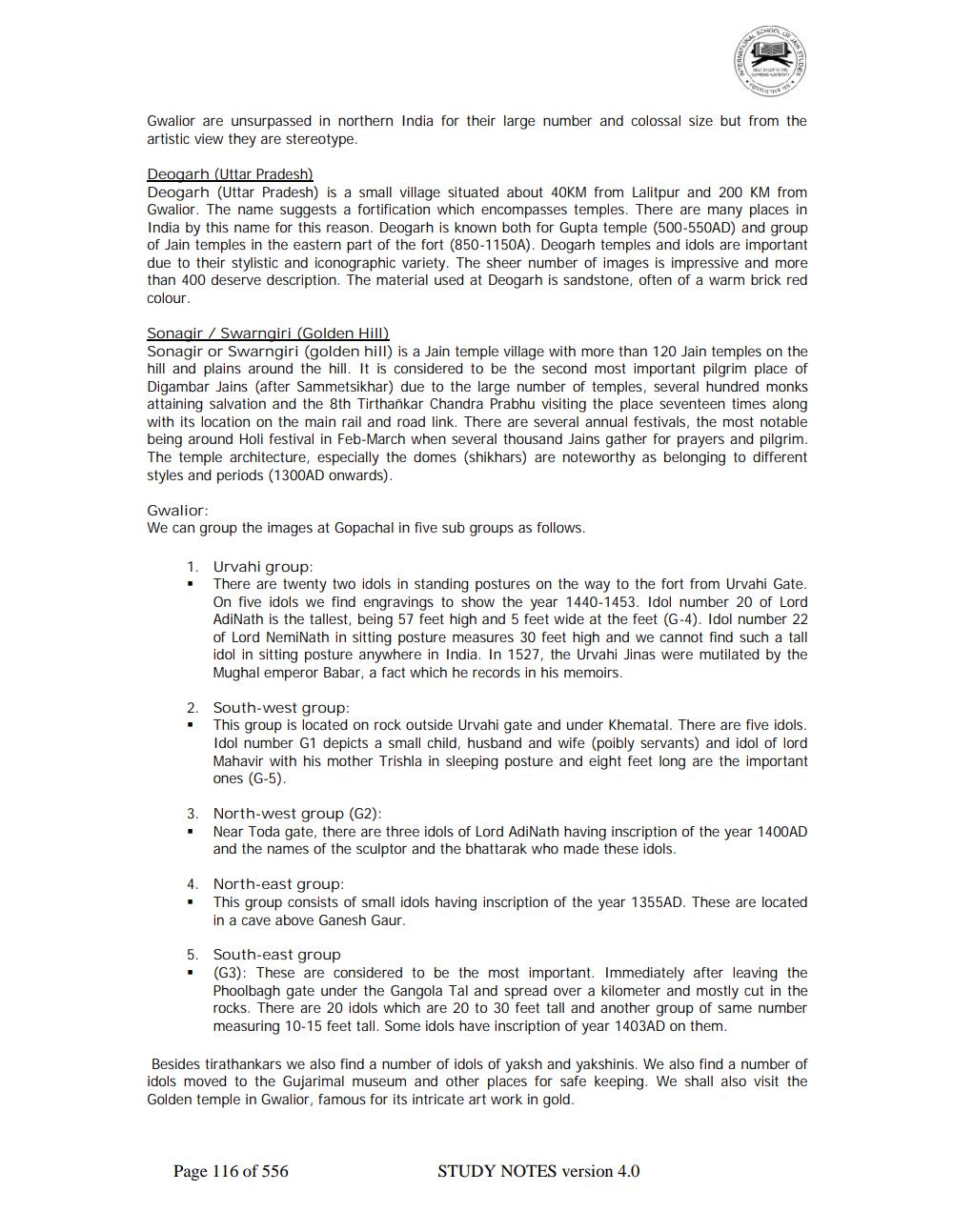________________
Gwalior are unsurpassed in northern India for their large number and colossal size but from the artistic view they are stereotype.
Deogarh (Uttar Pradesh)
Deogarh (Uttar Pradesh) is a small village situated about 40KM from Lalitpur and 200 KM from Gwalior. The name suggests a fortification which encompasses temples. There are many places in India by this name for this reason. Deogarh is known both for Gupta temple (500-550AD) and group of Jain temples in the eastern part of the fort (850-1150A). Deogarh temples and idols are important due to their stylistic and iconographic variety. The sheer number of images is impressive and more than 400 deserve description. The material used at Deogarh is sandstone, often of a warm brick red colour.
Sonagir/Swarngiri (Golden Hill)
Sonagir or Swarngiri (golden hill) is a Jain temple village with more than 120 Jain temples on the hill and plains around the hill. It is considered to be the second most important pilgrim place of Digambar Jains (after Sammetsikhar) due to the large number of temples, several hundred monks attaining salvation and the 8th Tirthankar Chandra Prabhu visiting the place seventeen times along with its location on the main rail and road link. There are several annual festivals, the most notable being around Holi festival in Feb-March when several thousand Jains gather for prayers and pilgrim. The temple architecture, especially the domes (shikhars) are noteworthy as belonging to different styles and periods (1300AD onwards).
Gwalior:
We can group the images at Gopachal in five sub groups as follows.
1. Urvahi group:
There are twenty two idols in standing postures on the way to the fort from Urvahi Gate. On five idols we find engravings to show the year 1440-1453. Idol number 20 of Lord AdiNath is the tallest, being 57 feet high and 5 feet wide at the feet (G-4). Idol number 22 of Lord Neminath in sitting posture measures 30 feet high and we cannot find such a tall idol in sitting posture anywhere in India. In 1527, the Urvahi Jinas were mutilated by the Mughal emperor Babar, a fact which he records in his memoirs.
2. South-west group:
This group is located on rock outside Urvahi gate and under Khematal. There are five idols. Idol number G1 depicts a small child, husband and wife (poibly servants) and idol of lord Mahavir with his mother Trishla in sleeping posture and eight feet long are the important ones (G-5).
3. North-west group (G2):
Near Toda gate, there are three idols of Lord AdiNath having inscription of the year 1400AD and the names of the sculptor and the bhattarak who made these idols.
4. North-east group:
This group consists of small idols having inscription of the year 1355AD. These are located in a cave above Ganesh Gaur.
5. South-east group
·
(G3): These are considered to be the most important. Immediately after leaving the Phoolbagh gate under the Gangola Tal and spread over a kilometer and mostly cut in the rocks. There are 20 idols which are 20 to 30 feet tall and another group of same number measuring 10-15 feet tall. Some idols have inscription of year 1403AD on them.
Besides tirathankars we also find a number of idols of yaksh and yakshinis. We also find a number of idols moved to the Gujarimal museum and other places for safe keeping. We shall also visit the Golden temple in Gwalior, famous for its intricate art work in gold.
Page 116 of 556
STUDY NOTES version 4.0




